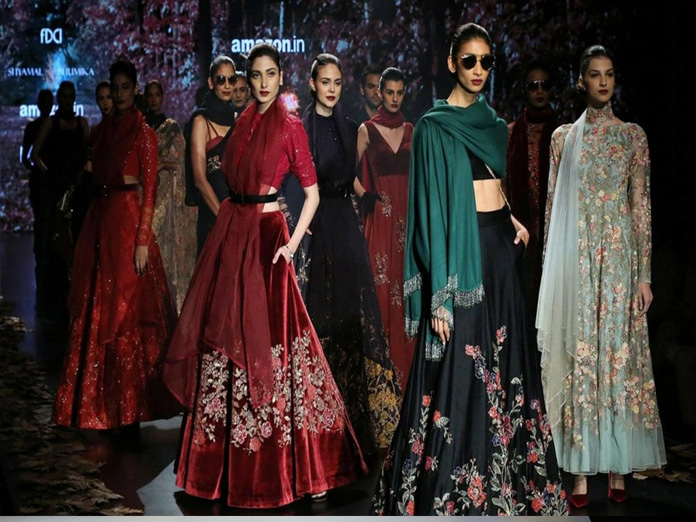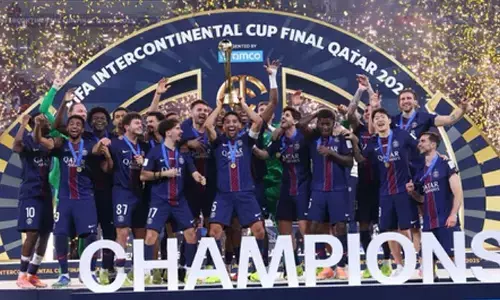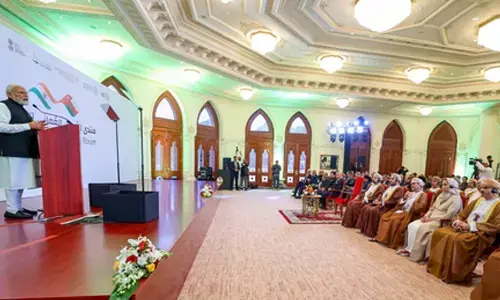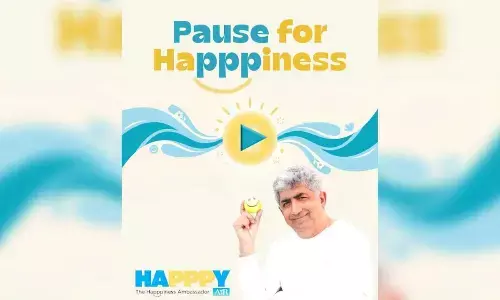Made in South Asia for Self Help Groups

With an aim of enhancing international relations and promoting the livelihood of women selfhelp groups from Afghanistan, Bangladesh, Bhutan, India, Nepal and Pakistan, the Fashion Design Council of India FDCI organised a fashion show Made in South Asia for the World Bank
With an aim of enhancing international relations and promoting the livelihood of women self-help groups from Afghanistan, Bangladesh, Bhutan, India, Nepal and Pakistan, the Fashion Design Council of India (FDCI) organised a fashion show "Made in South Asia" for the World Bank.
Set against the backdrop of disaster affected areas, the gala, which took place on Thursday, blossomed "hope" and "life" on the runway by showcasing over 60 ensembles made from textiles created across India and South Asia by the women self-help groups.
And to make the event more remarkable, several renowned Indian designers like Suneet Varma, Nitin Bal Chauhan, Rina Dhaka, Reynu Taandon and Payal Jain worked on the different textiles of South Asian regions and created meaningful garments to promote cross-cultural understanding among fashion aficionados.
Talking about her designs for the show and the initiative, Dhaka said,"I got some of the material from Odisha and handful of embroideries from Pakistan and then we coupled it with our own ideas to make simplistic clothing. In my designs, you can see the amalgamation of the Pakistan and Indian textiles.
"This is a beautiful initiative and it will definitely boost up our local craftsmen." Couturier Reynu Taandon, who worked with the local craftsmen of East Bengal and West Bengal for her ensembles, urged everyone not to overlook the local weavers.
She said: "There are so many weavers in the world, if we are picking up the things from them, then we are automatically generating employment opportunities for them, isn't it great? "If I get a chance to work with one NGO who is ready to do weaving for me, then I am happily ready to start curating more designs with their help."
The other ensembles on the ramp were a serene mix of different types of textiles from different regions of India like Himachal Pradesh, Bihar and Assam.
According to Sunil Sethi, FDCI President, the "noble" fashion shows are the need of the hour. "The World Bank has helped organise millions of women into self-help groups and provided skill development which is a crucial aspect of growth. The FDCI and our designers are delighted to be supporting this initiative and helping rural women find fresh avenues for sustenance and livelihood."
He also spoke about the importance of the collaboration of nations in the fashion world. "Amalgamation of nations in fashion shows is very much important. I feel collaboration is the future. "Through collaboration with other regions and nations, local artisans and craftsmen get global exposure. And this would lead to more jobs in the country," added Sethi.
And apart from the display of traditional textiles, it was the classical music in the background which added more oomph to the winter night show and made the spectators in awe of the handwoven ensembles.








